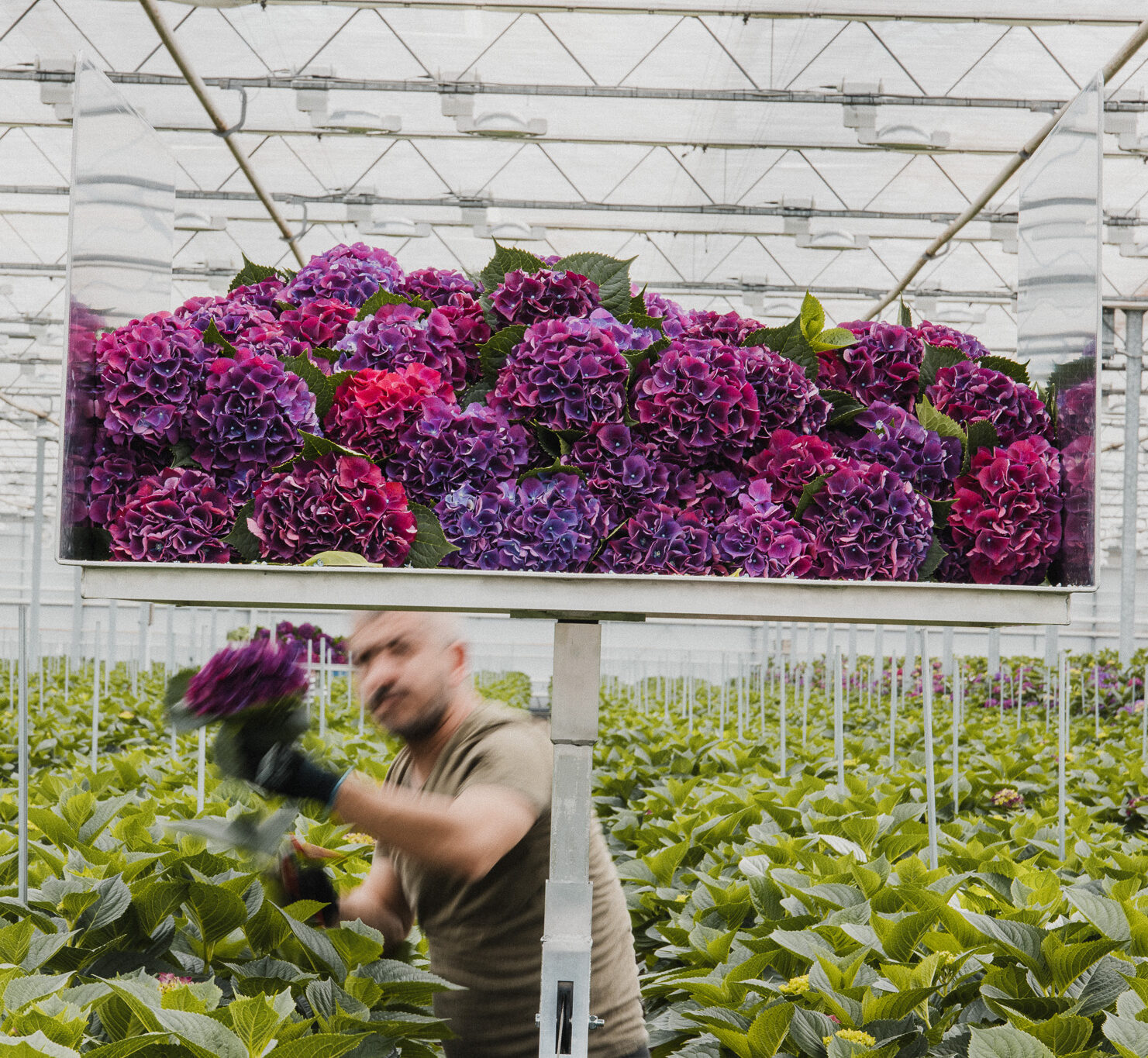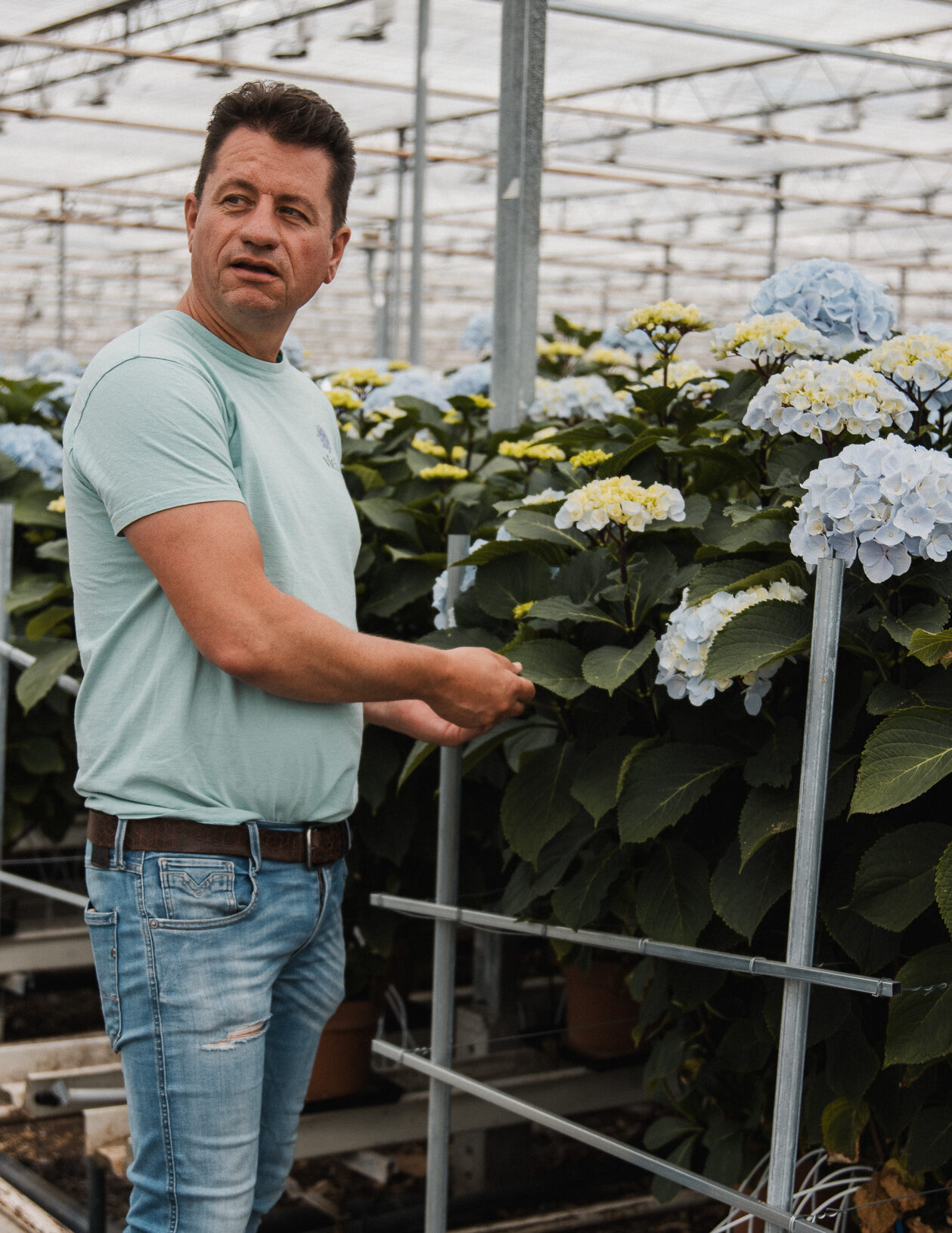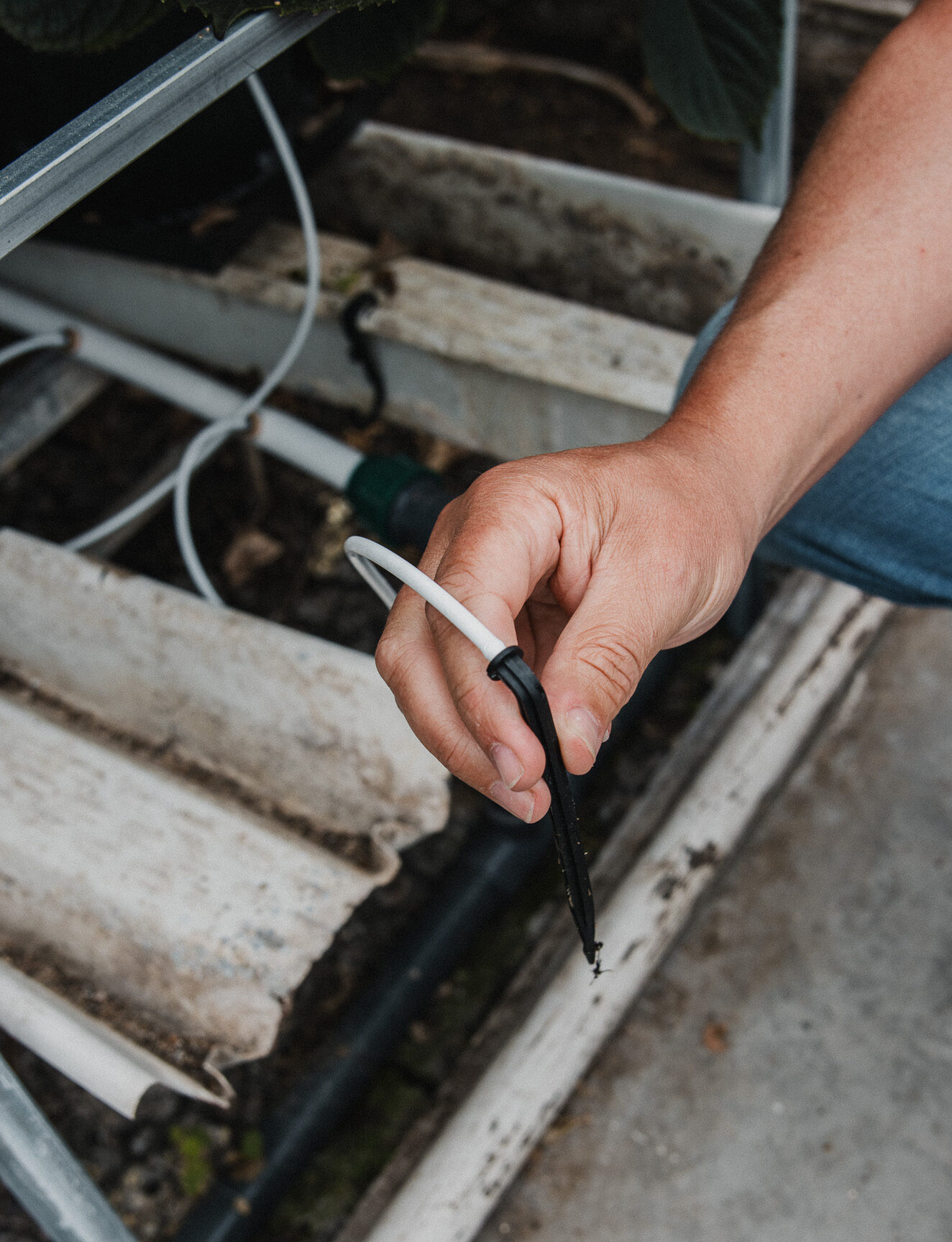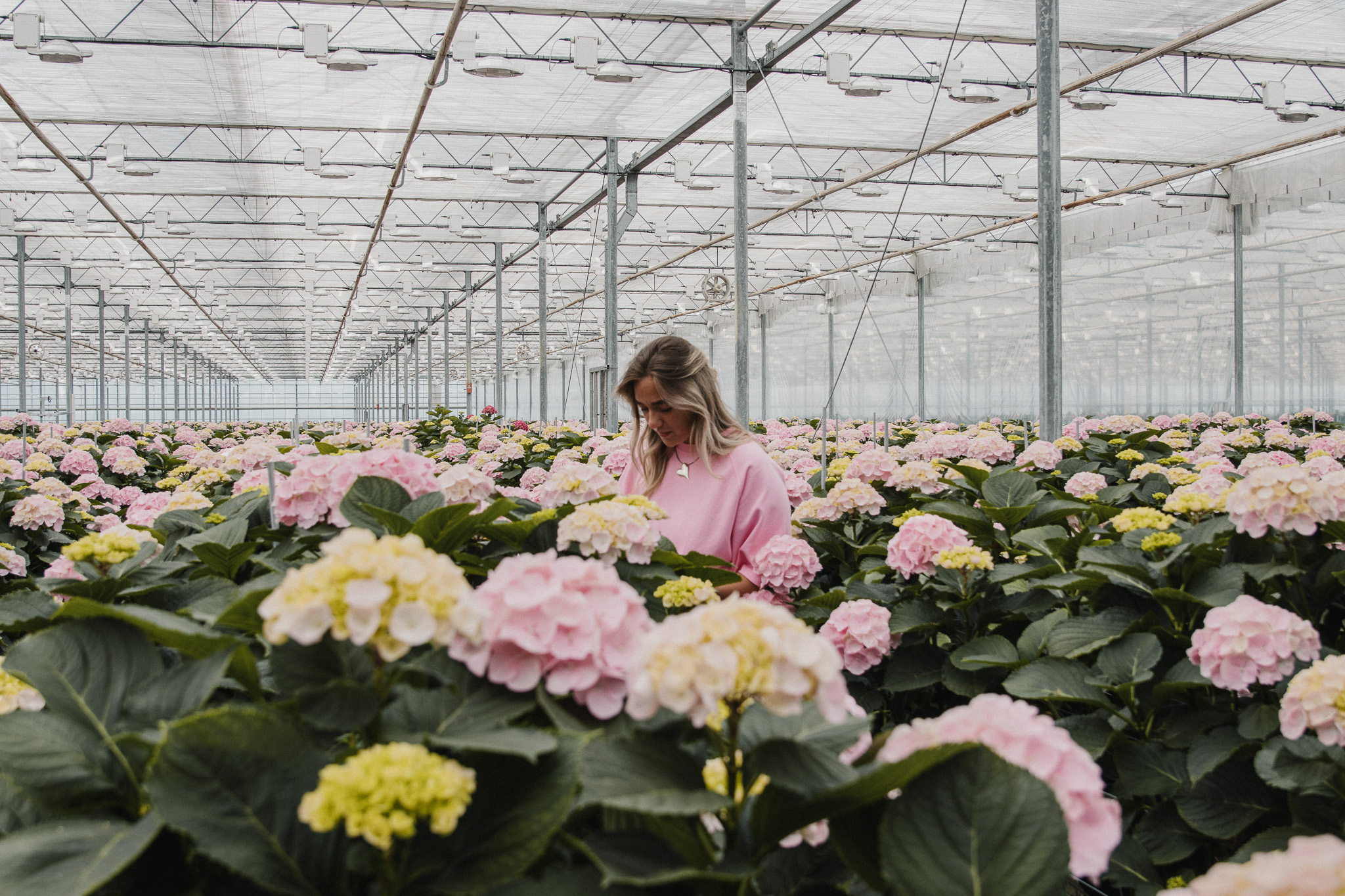Step inside Vicini, a hydrangea nursery partnered with Greenflor, a leading importer and flower wholesaler. Here, discover the essential steps in the fascinating process of hydrangea cultivation, from careful cultivation to shipping.
Hydrangea nursery Vicini
Hortensia nursery Vicini from Nootdorp merged last year with Arend Roses, a rose nursery. Hortensias from Vicini are now housed in a former rose nursery. The former rose grower and the hydrangea grower are now partners. From January 2024, Vicini Nursery will continue at two locations in Maasland. They have two greenhouses with hydrangeas, totalling 11 hectares. One greenhouse is 8 hectares and the other 3 hectares. Their passion for ornamental cultivation shines through in their methods and products.


Seasonal beauty at Vicini
The nursery’s hydrangea season runs from April to December, with a period of 3-4 months without availability. Customers and florists look forward to when hydrangeas are available again.
Vicini harvests all hydrangeas 2-3 times a week in a specific section of the greenhouse. The names of the hydrangeas are decided in consultation with the breeder. The Verena is one of the most important varieties grown by Vicini. This variety is grown and processed in the largest numbers.
Water and metal: the secret of colourful hydrangeas
The hydrangeas are fed by a drip irrigation system, where each plant receives 50 cc of water every hour through two hoses in the potting soil. This process is controlled by a computer, with the frequency of watering varying depending on the temperature. One pipe supplies the plant with water and nutrition, while the other pipe contains water and metal. This metal is responsible for changing the colour of the hydrangeas.
Many hydrangeas have basic colours like red, pink and white, but for other colours, a metal is added to the water to colour them. Aluminium is used to make pink hydrangeas blue and red hydrangeas purple.

Pruning for healthy hydrangeas
Every hydrangea plant blooms only once a year. After removing the flowers, the plant still requires maintenance, although less intensively. Regular pruning and thinning of branches is necessary to maintain about 15 branches per plant. Thin branches are removed repeatedly. After that, the plants grow naturally and require little maintenance.
Did you know that?
When prices are low and there are too many flowers, they let the hydrangeas colour through. This results in classic hydrangeas with the intermediate colour champagne, for example. Classic hydrangeas are frosted flowers and are auctioned separately. This gives these flowers a unique and attractive colour. This allows them to be sold despite lower prices.


